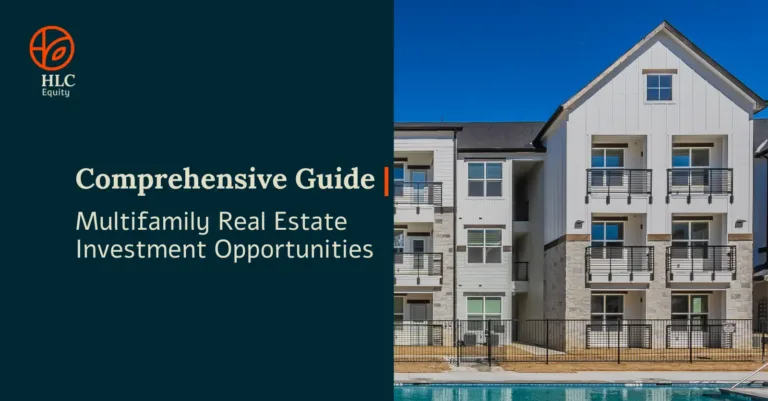What is Real Estate Syndication?
Real estate syndications are a way of pooling capital from various individuals to then, collectively, invest in a real estate asset. The term “syndication” makes this process seem more complicated than it really is. Think of it like buying an airline ticket. Anyone who has purchased an airline ticket has participated in a syndication. Each ticket sold goes toward funding the flight. Some people might pay more or less for their tickets. Some people might buy more than one ticket. Yet collectively, the proceeds from the ticket sales are used to pay for the trip. The same is true with real estate syndications. Several individuals invest in the syndicate, and then the manager of the syndicate (known as the “sponsor”) leverages those funds to invest in a real estate deal. Syndications are the original form of real estate “crowdfunding,” a term that only grew in popularity with the advent of online crowdfunding platforms like CrowdStreet and RealtyMogul. Syndications can be as simple as two people investing together. Others can be much more complex, with dozens if not hundreds of people investing in a single deal. How many people invest in a syndication often depends on the size of the deal, the amount of equity required, and the minimum investment contribution.Reasons to Invest via a Real Estate Syndication
There are several reasons why investors participate in real estate syndications.
Syndications are generally a great vehicle for those who cannot or do not want to buy an investment property outright on their own. Passively investing in real estate is a way to “set it and forget it,” leaving all day-to-day activities to the sponsor overseeing the deal. The sponsor, which is considered the active partner, owns all responsibilities ranging from acquisition to permitting, design, setting up the financing and signing onto loans, construction, lease-up and eventually, disposition. In other circumstances, someone simply may not have sufficient capital to purchase an investment property on their own. They might only have $100,000 to invest, for example, which may not be enough to acquire, renovate and stabilize a property. This is a prime example for when the syndication’s partnership model works particularly well. Syndications also open the doors to deals that individual investors could not access on their own. For example, a sponsor might use a syndication to raise $20 million in equity in order to purchase a $75 million asset (the balance funded with leverage, i.e., bank debt). Few individual investors have this amount of capital to invest on their own, thereby making syndications a great way to access deals that would otherwise only available to institutions, pension funds, family offices and the like. With a smaller yet still substantial investment of say, $100,000, an individual can participate in a syndication and reap the benefits that come with investing of deals of this scale. In short, pooling money through a syndication allows people to invest in larger, often more lucrative deals. Investors are also drawn to syndications as a way of mitigating risk. Rather than making one large investment in a single deal, syndications create opportunities for investors to invest smaller denominations in multiple deals. This approach allows people to spread their risk across projects, product types and geographies.The Parties Involved in a Real Estate Syndication
There are generally two key parties to a real estate syndication: the syndicator (typically referred to as the “sponsor,” “developer,” or “general partner”) and the investors. The sponsor can be an individual or company and is responsible for all day-to-day activities related to the deal. This includes crafting the business plan and then executing that strategy. The sponsor’s responsibilities include researching and evaluating various opportunities, property acquisition, planning and design, permitting, financing, overseeing construction, marketing and lease-up. The sponsor quarterbacks the deal through to completion, which may include refinancing or selling the property, depending on the desired exit strategy. Sponsors will usually have an equity stake in the deal themselves. This is a way of ensuring that the sponsor and investors’ interests are aligned. The sponsor may also collect various development fees along the way, but those fees are usually not paid out until the investors have earned a certain degree of the profits first. Investors are the other party to a syndication. Most investors are considered “limited partners” and have a passive role in the syndication. After contributing their capital, the LP investors generally do not have any responsibilities related to the deal, and therefore, have very little decision-making authority. Therefore, it is important that investors feel confident that the sponsor will execute the proposed business plan accordingly on their behalf.How Profits are Split in a Real Estate Syndication
The distribution of a syndication’s profit can be structured many ways. This structure is often referred to as the deal’s “equity waterfall.” The term “waterfall” stems from the idea that cash flow from commercial real estate projects will flow through to investors, pooling at different points, and after that pool is full, the profits then spill over to the next pool of investors in a tiered fashion. In most equity waterfalls, a syndication’s profits are split unevenly amongst the partners. The sponsor, for example, may earn a disproportionately larger share of the profits if the project beats expectations. That extra slice of the pie is referred to as the “promote”. Promotes are used as a bonus to incentivize the sponsor to deliver results beyond what was expected. Equity waterfalls can be very nuanced and as mentioned, can vary from deal to deal. That said, you can expect a waterfall structure to look something like this:- Tier I. Return of Capital: In this tier, 100% of cash flow distributions go straight to the LPs to repay investors the capital that they originally contributed.
- Tier II. Preferred Return: At this stage, all cash flow goes to the LPs again until a preferred return on their investment is achieved. This preferred return might be somewhere in the 6-10% range depending on the deal dynamics. The rate is often called a “hurdle rate” since it is the hurdle the sponsor much overcome before earning any profits themselves.
- Tier III. Catch-Up: A waterfall will sometimes have what’s known as a “catch-up” provision, in which case all distributions at this point go to the sponsor until they achieve a certain percentage of the profits themselves.
- Tier IV. Carried Interest: At this level, remaining profits are split between the sponsor and the LP investors based on a predetermined allocation. Returns do not have to be split evenly between the sponsor and LPs at this point. The sponsor may collect an oversized share of the profits relative to their equity investment in exchange for managing the deal.
HLC Opco LLC (or “HLC Equity”, “HLC”, “We”, “Us”) has prepared this post for informational purposes only. HLC does not give investment advice, endorsements, analysis or recommendations with respect to any securities. Nothing contained in this email constitutes tax, legal, insurance or investment advice, nor does it constitute a solicitation or an offer to buy or sell any security or other financial instrument, which only can be made through official offering documents that contain important information about risks, fees and expenses. Information regarding HLC’s investment opportunities are intended and available for accredited investors only (criteria HERE). HLC urges potential investors to consult with licensed legal professionals and investment advisors for any legal, tax, insurance, or investment advice.
HLC has prepared this post based on information from various sources that are believed to be reliable (including clients and other third parties), but no guarantee is made as to its accuracy or completeness and HLC accepts no liability related to information provided.


